Nowadays, the habit of making, at least in the area of culture, unselfish gestures moved solely by true passion is perhaps being somewhat lost. It has become normal to assume that an act performed toward culture should be matched by an appropriate return. But fortunately this is not always the case. Nor was it in the past. History has given us great characters who had the generosity to give without asking for anything in return. One of these characters, perhaps little known, but to whom we owe one of the most beautiful pages in the history of Italian art, is Giuseppe Ricci Oddi (Piacenza, 1868 - 1936), who allowed the birth of one of the most important Italian museums for art between the nineteenth and twentieth centuries (as well as probably the most complete and organic) without the need to make proclamations, simply in a whisper, with immeasurableelegance and elegance. It is the story of a collector who was always discreet, who managed to put together an important collection thanks to his intelligence, his passion, and his humility in being able to ask for advice from a few, carefully chosen friends who were not particularly influential, but who were gifted with a great ability to recognize good bargains. It is a story that takes off in the late nineteenth century.
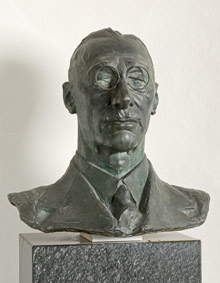 |
| Luciano Ricchetti, Portrait of Giuseppe Ricci Oddi (1937; 41.5 x 40 x 42 cm; Piacenza, Ricci Oddi Gallery) |
 |
| Francesco Filippini, Sheep Sheared (1885; oil on canvas, 130 x 80 cm; Piacenza, Galleria Ricci Oddi) |
 |
| Gaetano Previati, After Novara (1884; oil on canvas, 114 x 43 cm; Piacenza, Galleria Ricci Oddi) |
These were, however, a couple of sporadic purchases: others followed, whose only purpose was to prevent the apartment walls from remaining empty, but Giuseppe Ricci Oddi had other things on his mind, art still not interesting him that much. Although perhaps something inside him is beginning to stir. Those first purchases do not leave him entirely indifferent. Perhaps, the noble entrepreneur, the lusty sportsman, feels a passion brewing. That begins in 1902 with a real “stroke of lightning,” as the Piacenza-based art historian Ferdinando Arisi writes. The passion for collecting “at first moderate” then became “restless, dominant, overwhelming, supreme.” In that year, Giuseppe Ricci Oddi again went to Milan with Oreste Labò to make new purchases, this time with keen interest: however, in 1903 their relationship broke down, and the collector therefore sought advice from another friend of his, Carlo Pennaroli. Another five years passed, however, without Giuseppe Ricci Oddi making any purchases, as he was distracted by business, but after this time had passed he threw himself headlong into the art world once again. It is from this year that the passion intensifies, coming to occupy for a good part of Giuseppe Ricci Oddi’s days, who now devotes almost all the time left free from work to art. His friend Pennaroli is a trustworthy man endowed, as Ricci Oddi himself writes, with “fine taste” and “steadfast and acute attention”: by trade he is an accountant in a bank, but he too is moved by an immense love of art, which he puts into practice by collecting a small personal collection, and above all by suggesting to Giuseppe Ricci Oddi the artists of the moment, the bargains not to be missed, and the ideal paintings and sculptures to enrich the collection. Together, the two traveled throughout Italy, visiting workshops, galleries, auctions, and returning with the best of Italian painting of the time.
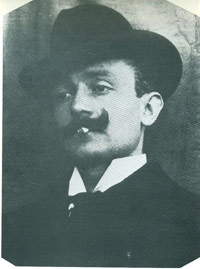 |
| Carlo Pennaroli |
In his diary, the collector, as mentioned, also describes his intentions: the goal is to “form a gallery that one day (I hope!!!) will have to succeed pleasing and interesting not only to artists and scholars who are good connoisseurs of art, but also to the mass of visitors” (Dec. 27, 1918). Giuseppe Ricci Oddi’s conception of art, after all, is very high: “the work of art is a legacy of history, and the holder (how often unworthy!... ) is but its temporary custodian” (January 2, 1919). Meanwhile, the collection grows considerably. Works by the greatest contemporary artists arrive, representing all movements and schools of Italy. There are the Tuscans, such as Giovanni Fattori, Francesco Gioli, Telemaco Signorini, and Silvestro Lega (who is actually from Emilia but is likened to the Tuscans in style and frequentations); there are the Piedmontese such as Giacomo Grosso, Giuseppe Pellizza da Volpedo, and Marco Calderini; there are the landscapes of Antonio Fontanesi, an artist whom Giuseppe Ricci Oddi greatly appreciates (so much so that he bought as many as eleven of his paintings in the year 1918 alone), there are Francesco Hayez, Gerolamo Induno, the Scapigliati, Medardo Rosso, the Italians of Paris (Giovanni Boldini, Federico Zandomeneghi, Giuseppe De Nittis), and southerners such as Domenico Morelli, Edoardo Dalbono, and Vincenzo Irolli. And of course there can be no shortage of contemporaries, such as the painters of the Novecento group, but there are also Umberto Boccioni and Carlo Carrà. The collection truly gathers the best of the art of the time.
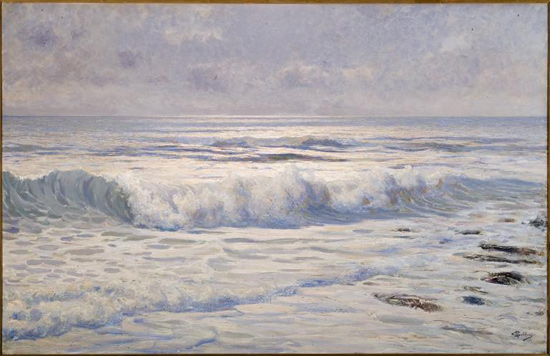 |
| Giorgio Belloni, Mareggiata (ca. 1890-1899; oil on canvas, 140 x 90 cm; Piacenza, Galleria Ricci Oddi) |
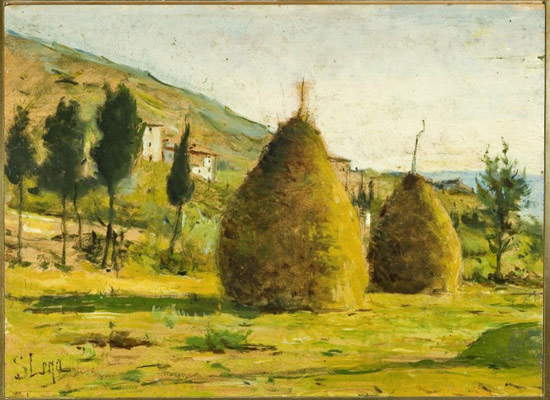 |
| Silvestro Lega, Pagliai al sole (1890; oil on panel, 38 x 28 cm; Piacenza, Galleria Ricci Oddi) |
A problem arises, however, and not a small one. The works are piling up in Giuseppe Ricci Oddi’s apartment, and it is necessary to acquire a building that can provide suitable accommodation for the collection, even with a view to opening it to the public in the future, because that is his goal: to make sure that the collection can become everyone’s. “My constant dream would be to place in a worthily adapted or specially constructed building my collection in order then to donate it to my city” (March 19, 1919). That of acquiring the building, however, is a “painful subject,” as he calls it, and a continual source of frustration, because Giuseppe Ricci Oddi is unable in any way, despite laborious searches, to find a suitable home. To these disappointments is then added a serious bereavement, because Carlo Pennaroli leaves prematurely in July 1919: a moving page of the diary is dedicated to him in which, with a heart full of sadness, his friend is remembered as a modest person, averse to all vanity, and endowed with great and true talent.
The search for a venue began in 1913 and ended in 1924, when Giuseppe Ricci Oddi reached an agreement with the municipality, which gave him the area on which the former convent of San Siro stands: the task of designing the gallery fell to Giulio Ulisse Arata, who willingly accepted the assignment and devised a recovery of the spaces of what was once the convent, devising a plan with the first rooms arranged alongside a long corridor leading toward a central room around which the remaining rooms were arranged, in the form of an octagon, almost like extensions. The result is an airy, well-lit, modern gallery in which the route can be developed divided basically by geographical areas and respecting a certain chronological order. Finally, the Gallery could be opened to the public on October 11, 1931, with an opening ceremony at which Giuseppe Ricci Oddi did not attend: too shy, modest and shy to participate in a social occasion. After all, already in 1921 he had refused the proposal to be named Commendatore of the Crown of Italy for his merits in the field of art: “I am profoundly and sincerely shy of any sort of official externality, the intimate and ineffable moral compensation that is the consciousness of having done and of doing something good and useful for my Homeland and for my City being enough for me” (February 6, 1921). In short: Giuseppe Ricci Oddi is happy to have donated his collection to the city without asking for anything in return.
Today, the Ricci Oddi Gallery, still modeled on the idea of its founder and in the meantime enriched with works of art that arrived after the death of its founder (such as Emilio Rizzi’s Toilette, donated by his daughter in 2003 along with other works by the artist), is one of the most modern and interesting museums in the country, visited by thousands of people every year, and hosting inside it exhibitions, lectures, educational activities, and even themed “art aperitifs” open to all. And all this is due to the foresight and generosity of a man who did not go in search of personal gain, notoriety, or even simply approval: his desire was only to do something for the benefit of the community. Almost a century later, therefore, we continue to be grateful to this great collector who dreamed of making, of his collection, a museum that would open its doors to anyone who wanted to visit it. And the dream, we can say, has become a splendid reality.
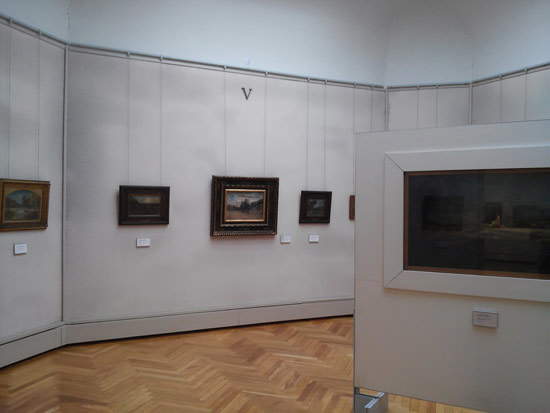 |
| A room in the Ricci Oddi Gallery in Piacenza. |
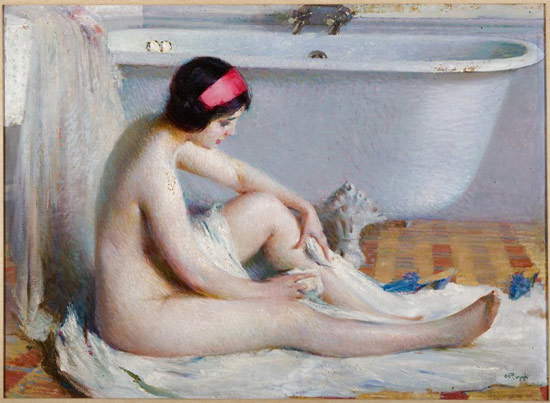 |
| Emilio Rizzi, La toilette or The Bath (1913; oil on panel, 98 x 72 cm; Piacenza, Ricci Oddi Gallery) |
Reference bibliography.
Warning: the translation into English of the original Italian article was created using automatic tools. We undertake to review all articles, but we do not guarantee the total absence of inaccuracies in the translation due to the program. You can find the original by clicking on the ITA button. If you find any mistake,please contact us.